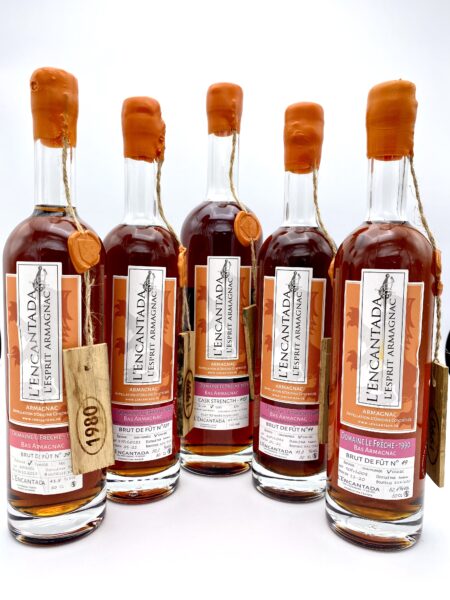The last few years Armagnac has experienced a small renaissance. The traditional single producer rustic brandy has struck a chord with connoisseurs. At the start of this new era some famous bottles were released through K&L Wines in California.
Much has already been written about the legendary early Cardinat and Pouchegu releases. But another set of bottles was also part of this initial wave:
- 1987 Fitte et Laterrade – Domaine le Chaou à Perquie
- 1988 Fitte et Laterrade – Domaine le Chaou à Perquie
Two bottles were released in 2019, with no further releases afterwards. The domaine has always remained a bit of a mystery. So the time has come to gather all the available nuggets of information and see if we can figure this one out.
We’re going to go on a hunt in the French countryside. Kick back and let’s talk Armagnac.
Who are those Fitte et Laterrade folks?
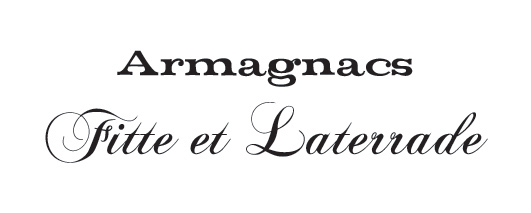
Armagnacs Fitte et Laterrade was a small bottler started by Vincent Laterrade and the Fitte Family. Located in Vic-Fenezac, which is also home to other famous bottlers like Gelas and L’Encantada. Their aim was to locate choice barrels and sell them at cask strength (Brût de Fut), working with producers and offering above market rates for choice barrels. The company has since folded, but Vincent Laterrade now runs a similar bottler called Armagnacs Laterrade. Sadly, distribution seems limited to smaller stores in the south of France.
What do we know?
Naturally Domaine le Chaou has no website and there is very little else to find online. However K&L Wines did provide some information during the initial release:
What is Domaine le Chaou? It’s another one of those stories of small producers that you find in Armagnac. Domaine le Chaou doesn’t make brandy…or wine. They grow grapes. For about seven years in the late ‘80s and early ‘90s, they sold Baco grapes to Domaine de Charron, an Armagnac producer known for making brandy in new oak casks. Instead of payment for the grapes, each year, Charron would give them back one cask of the Armagnac made from their grapes, and as happens in Armagnac, there they sat, with le Chaou selling a few of them here and there.
K&L Spirits Journal
The wonderful brandy at Fitte & Laterrade represents some of the most interesting stocks available anywhere in Armagnac, but these two single casks that Vincent acquired from a small farm outside of Perquie were easily the most exciting and unique. This extremely well-regarded village in the heart of Bas-Armagnac is home to the famous Chateau de Ravignan, one of La Landes most well regarded producers. But just south of Ravignan, a small domaine holds tiny amounts of Armagnac for home consumption. The farmer specializes mostly in foie and beef production and doesn’t produce his own Armagnac, but has small stocks stored on his domaine paid to him in exchange for his services harvesting the grapes. Vincent told me that he’d stumbled upon the Domaine after a long day of tasting and bought these two barrels on the spot. When they were delivered to the chai a few weeks later he re-tasted and thought he must have been crazy. He wasn’t sure he’d ever be able to sell them. This is just not what people trying to commercialize brandy in France are expecting. These single barrels were filled into new Gascogne oak without any manipulation whatsoever. The brandy was distilled and harvested at the famous Domaine de Charron and the Domaine Le Chaou was simply the site of aging rather than the site of production.
K&L Wine merchants
These two casks were located by the proprietor of Fitte et Laterrade by pure chance. The little domaine had distilled a tiny bit of Armagnac nearly two decades ago. The farmer who grew the grapes, proud of his work in the fields, spent a considerable amount of money to purchase new oak for the 300 liters or so of eau-de-vie that he managed to squeeze out of his tiny estate.
K&L Wine Merchants
The information provided is somewhat contradictory, but we can draw some conclusions:
- Domaine le Chaou is located in Perquie near Domaine de Charron
- The farmer / producer is unnamed
- Distillation was a shared operation with Charron
- The grapes were grown by either le Chaou or Charron
- The exact nature of the cooperation with Domaine de Charron is unclear
Domaine de Charron
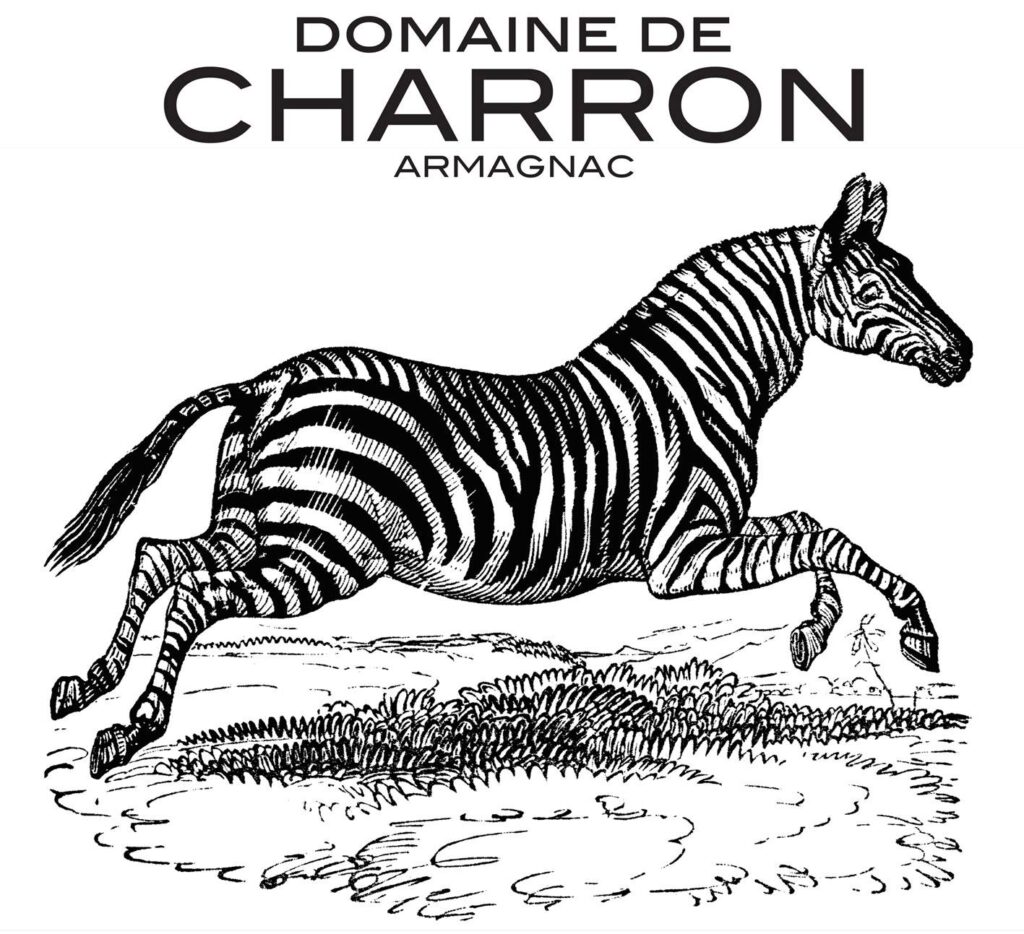
Domaine de Charron is a well-known, highly regarded producer of premium quality cask-strength Armagnac. They were one of the first who championed the oaky high-proof style. It’s hard to find a Charron vintage that hasn’t been awarded multiple times. The name “Domaine de Charron” comes from a building called in Occitan “Aou Charroun”.
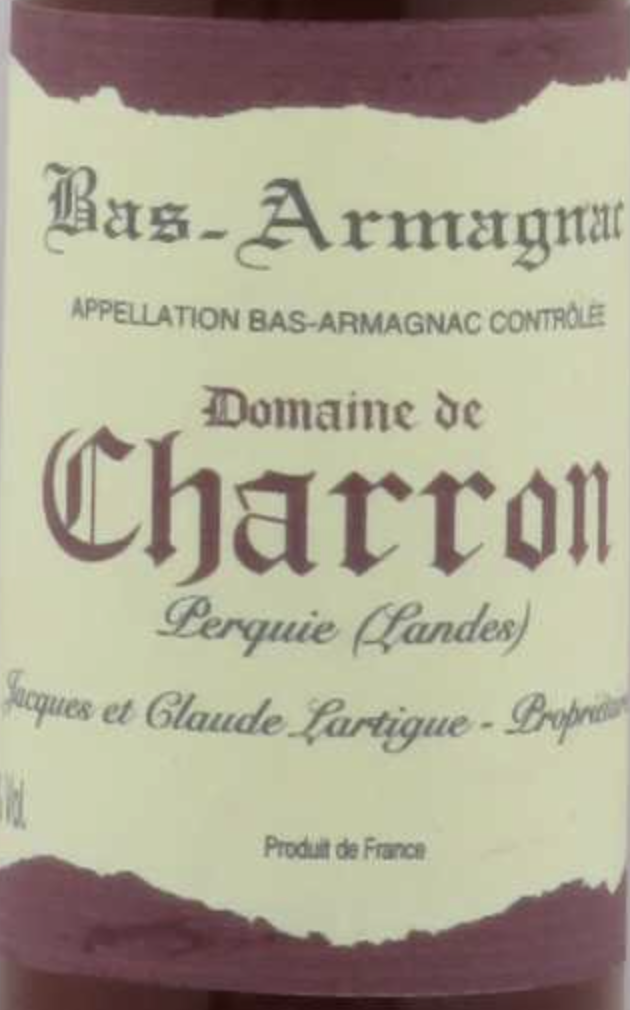
If we head to the Charron website there is a clear description of the history of the domaine. It all started with the vineyard owned by Jacques and Claude Lartigue’s great-grand-mother. The vineyard in Perquie was planted entirely with the Baco grape variety, and the wine produced was sold to the co-op. It sometimes happened that a few casks of Armagnac were kept, depending on the years.
In 1985, their father, Fernand, expressed his wish to have the vines pulled up. That is when Jacques and his brother Claude decided to buy those 4 acre plots in order to revive the production of Armagnac. The cellar building was bought with advice from Francois Darroze, a family relative.

And at the bottom of the page there is another interesting bit of information:
The vine-grower who lived next door was entrusted with the vineyard work, and thanks to his skills, a natural wine of outstanding quality was immediately produced.
Domaine De Charron
Based on this information, the farmer from Domaine le Chaou just might be the person also responsible for tending the Charron vineyards at the start of production in 1985.
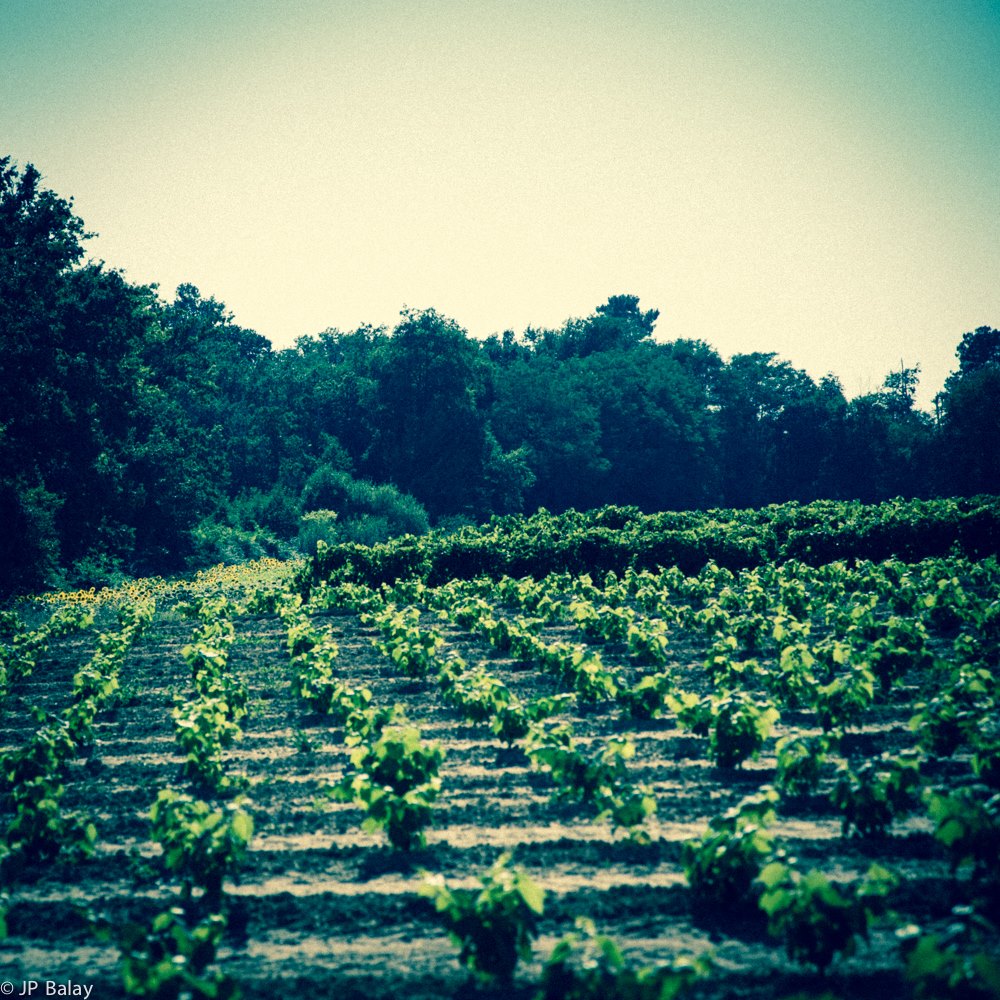
Arial reconnaissance
Some sleuthing on google maps brings up a small farm located near Perquie, tagged as Chaou. The surrounding fields don’t seem to be planted with vines, but that could explain why the domaine is no longer producing Armagnac.

Boots on the ground
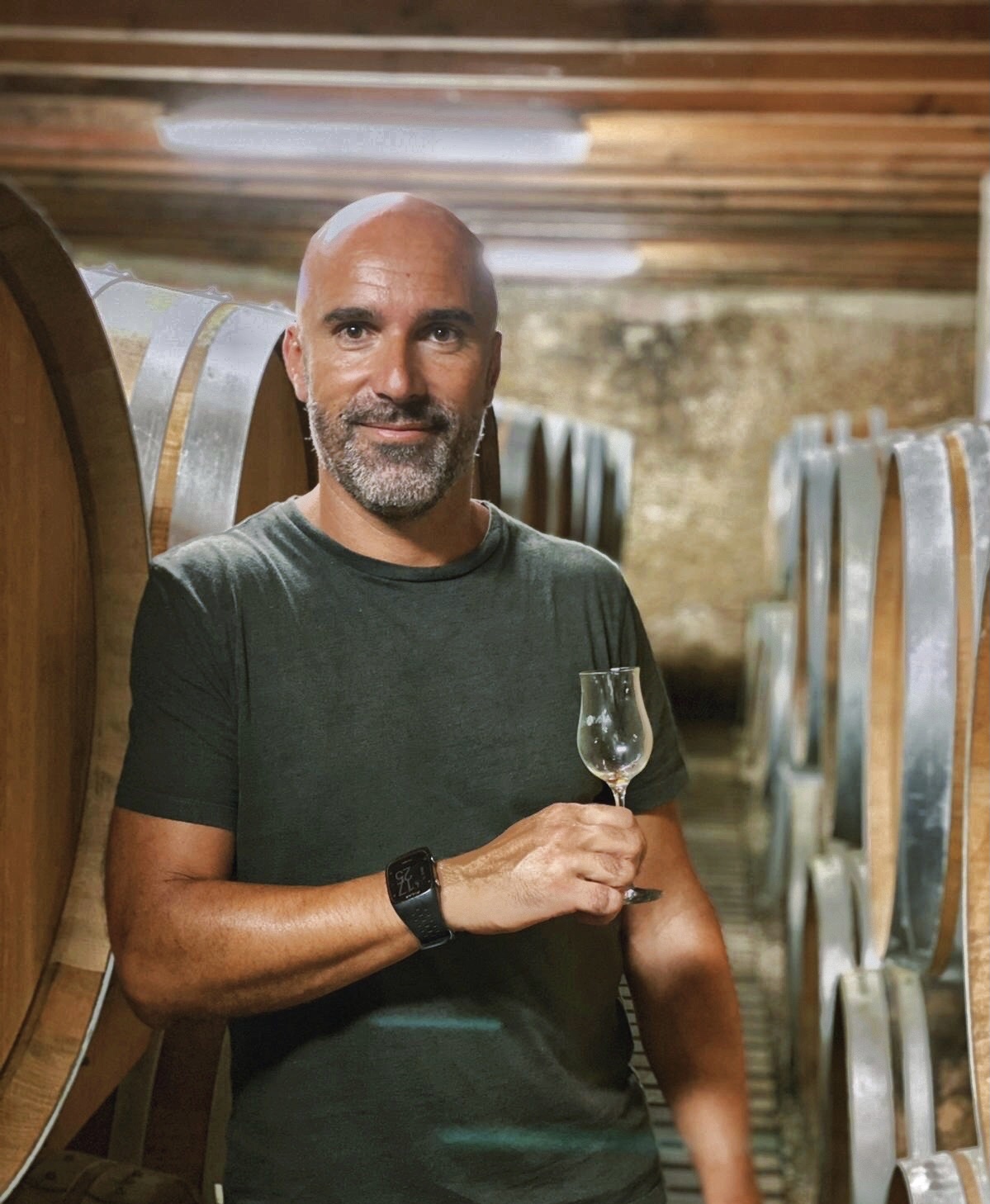
It seems clear that Domaine le Chaou is a small farm located in Perquie. However the definitive story behind the 1987/1988 releases proved hard to pin down. The cooperation with the more well-known Domaine de Charron is particularly interesting. That’s why I decided to reach out to the current owner of Domaine de Charron, Jean-Philippe Balay. He knew the name of the farmer and offered to dig up more details.
After a few weeks he came back with the following story:
The name you are looking for is Jean-Claude Duluc, he was a small farmer in Perquie (he has been retired for a long time). He had a little parcel of Baco and he was also the person who was taking care of Charron grapevines (vine pruning, harvest…) in 80’s and early 90’s.
This all happened 30-35 years ago but according to his knowledge he did not exchange baco grapes from Chaou to Charron (Chaou is smaller than Charron). In addition, officially a grape producer cannot buy grape from an other domaine. Only a negociant can do that.
He told me however that in the 80’s, the Charron wine was distilled at Chaou (in his barn) but each domaine distilled its own wine. The Armagnac production of Chaou was one barrel every year (sometimes two).
To summarize Chaou is an authentic tiny domaine producing Armagnac from baco grape, very close to Domaine de Charron and Jean-Claude, the farmer from Chaou was working on our wines in the 80’s and 90’s.
Jean-Philippe Balay, Domaine de Charron
Following this initial story, I reached out for further information, and Jean-Philippe was able to dig up the following additional information:
Jean-Claude Duluc was a farmer in Perquie. He had cows, cultivated lands (corn…), and vines of Ugni blanc and Colombard. He sold the wine, it was not used for Armagnac production.
During more than 10 years, probably starting in 1985, he took care of the Charron vines. He was a good friend of Jacques Lartigue (one of brothers that owned Domaine de Charron).
During a few years the Armagnac of Domaine de Charron was distilled in Jean-Claude’s barn with the copper still of Roumat. Roumat was a traveling distiller based in Villeneuve de Marsan. Jean-Claude took the opportunity to also distill his own Baco (he had a little parcel of Baco) with the same Roumat copper still during the Charron distillation period.
Only one or two casks of Baco Armagnac were produced from the Chaou plot every year.
Jean-Philippe Balay, Domaine de Charron
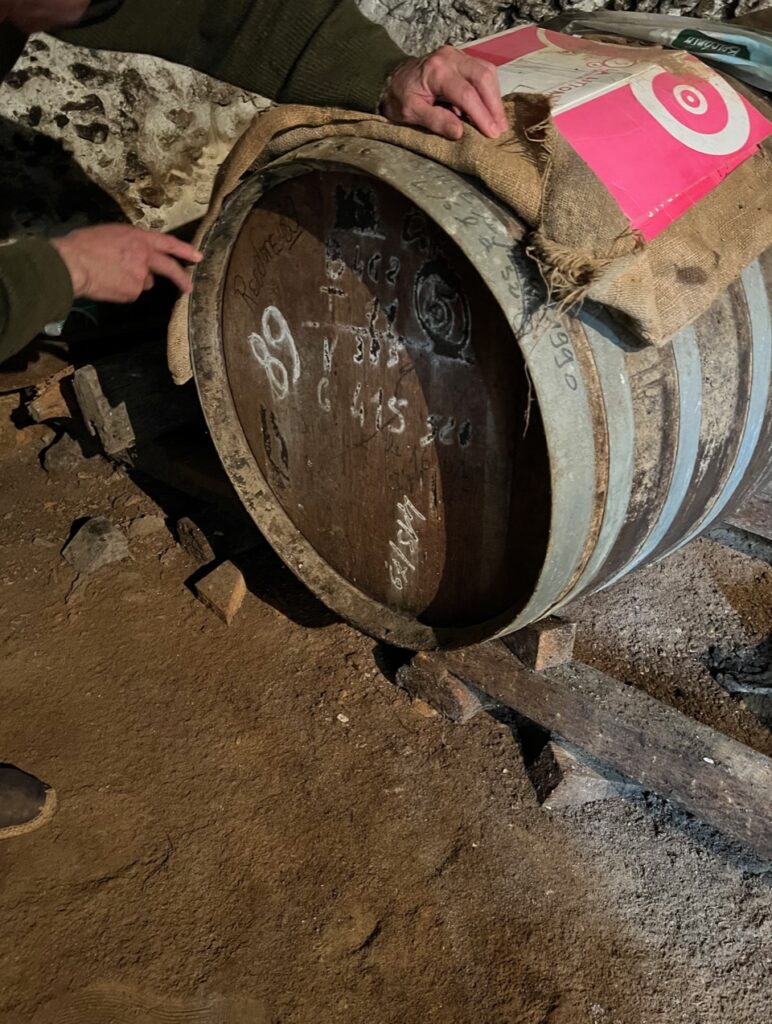
Cheers and thanks!
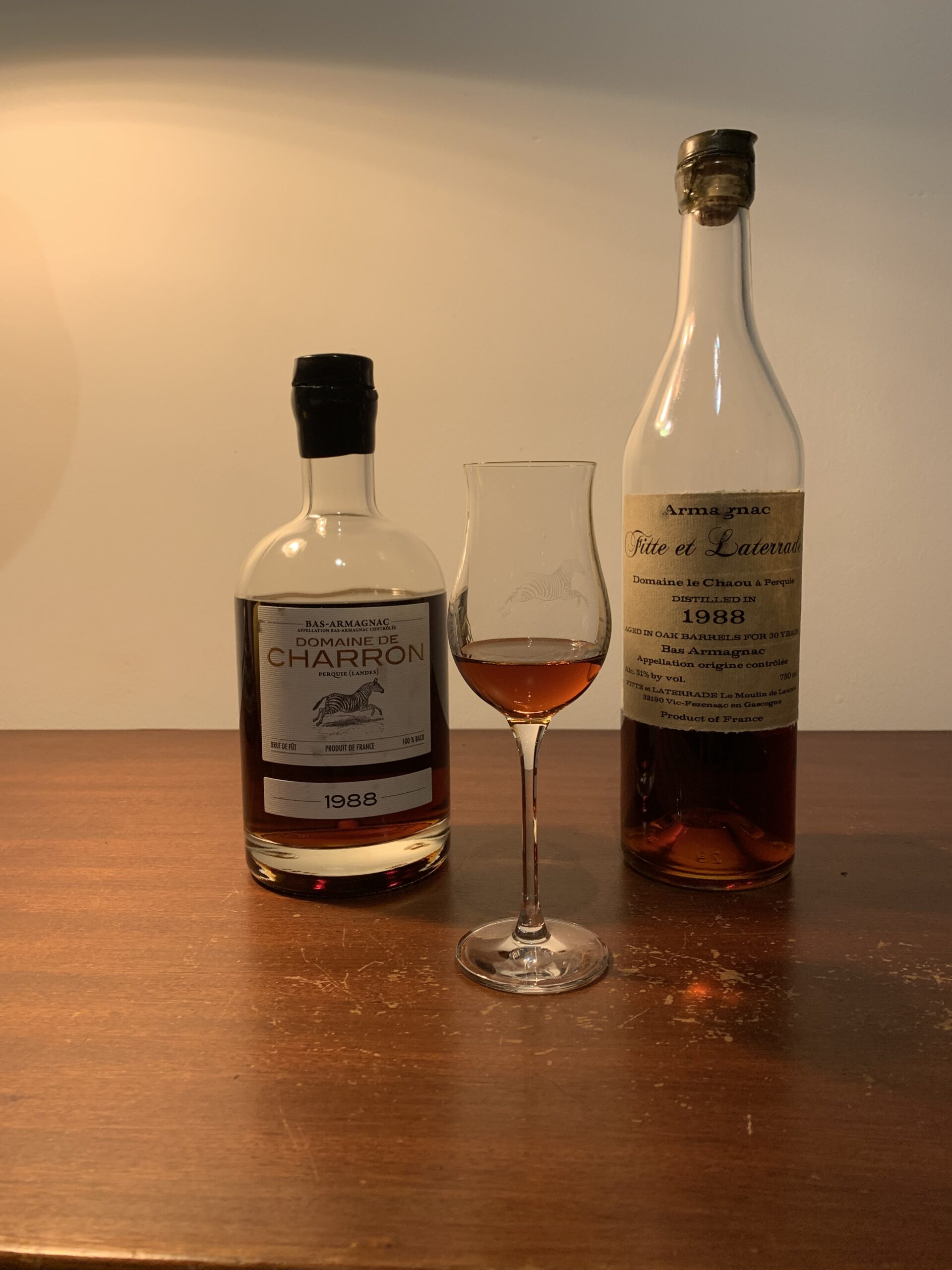
So next door to the famous Domaine de Charron there was an even smaller plot of vines worked on by the same farmer for his private use. One or two barrels were produced each year, and through luck and serendipity, this was shared with a wider audience.
Until the fate of the remaining two barrels is decided, we can be glad that Domaine de Charron is still producing wonderful Armagnac, which is widely available.
So I say cheers Jean-Claude Duluc–thank you very much for sharing your treasures. Also a massive thank you to Jean-Philippe from Domaine de Charron for helping with solving the mystery!



